This floating egg experiment is a lot of fun for kids to try! You can get an egg to float in the middle of the glass and it’s almost like a magic trick! You only need eggs, salt and water. Kids can learn about density with this cool science experiment!
RELATED: Dancing Corn Experiment
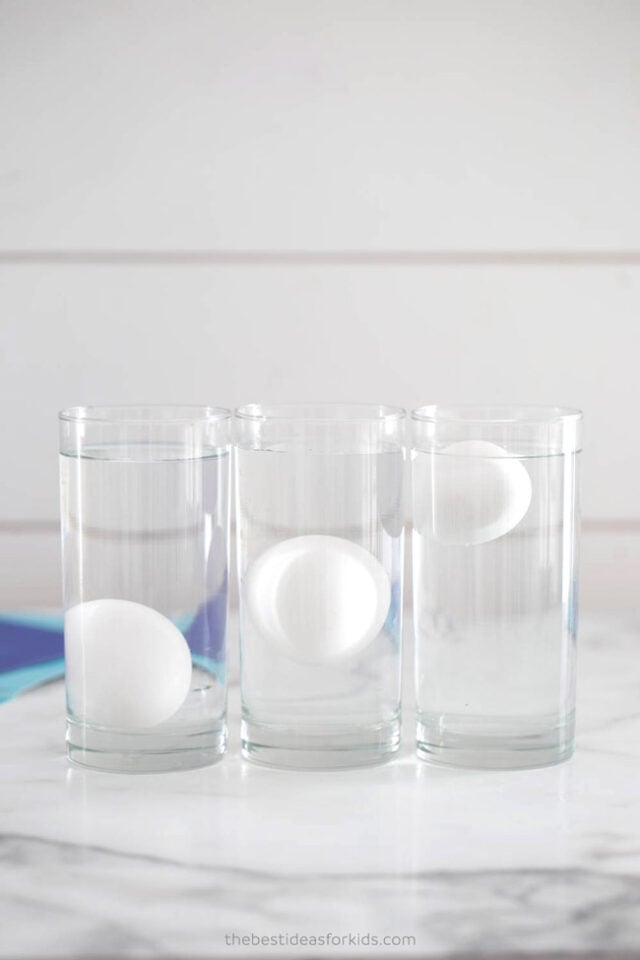
Floating Egg Science Experiment
Have you ever made an object float? How about when you go swimming in salt water, do you notice you float much more easily?
This science experiment explores the difference between salt water and fresh water and why objects float in salt water!

Watch the Video Tutorial!
The Science
This is a classic science experiment that shows how changes in the density of a liquid can affect whether an egg sinks or floats.
When you place an egg in regular water, it will sink to the bottom of the glass because the egg is denser than the water. There are more molecules per square inch in the egg than the water, causing the egg to sink.
When you start to add salt to the water, the salt dissolves and the molecules spread out and increase the density of the water. Now there are more molecules per square inch in the water, which causes the egg to float.
Water Only Glass

The egg sinks because it is more dense than fresh water, meaning there are more molecules per square inch.
Salt Water Glass
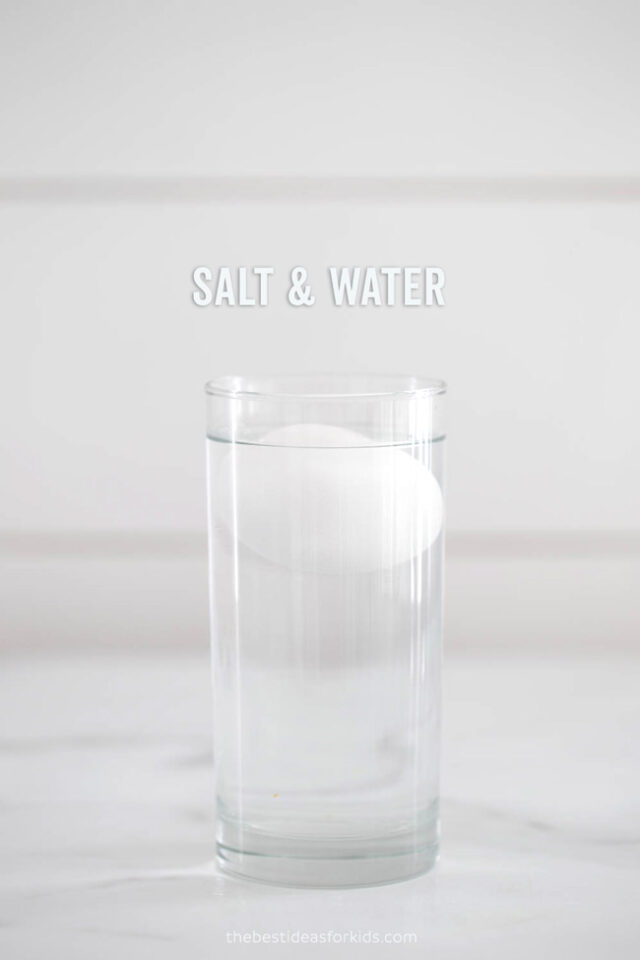
Adding salt to the water increases its density by adding more molecules per square inch, causing the egg to float. The egg is less dense than the salt water.
Water & Salt Water Glass
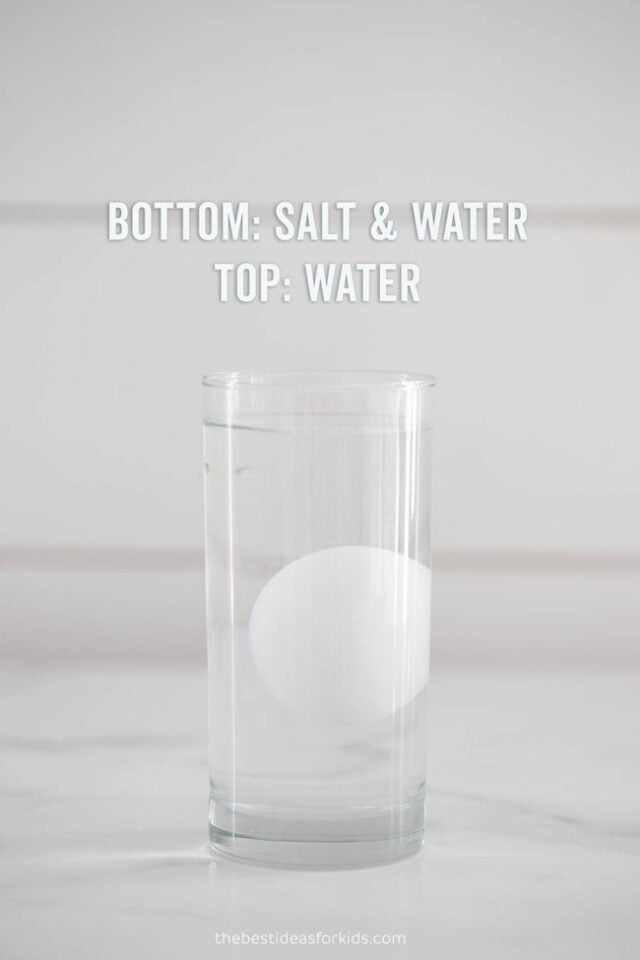
When you fill up the glass halfway with the salt water, the egg floats. When fresh water is added on top, it is less dense than the salt water, so it floats on top, allowing the egg to still float in the middle.
The egg continues to float in between the space where the fresh water meets the salt water because the egg is still less dense than the salt water but more dense than the fresh water.
How to do the Floating Egg Experiment
1. Carefully add your eggs into each cup.
You will need 3 eggs.

2. Pour fresh water (cold tap water is fine) into the first cup.

3. Make the salt water.
Boil hot water in a kettle. Adults to assist with this.
Add 1/4 cup of salt into a pouring cup.
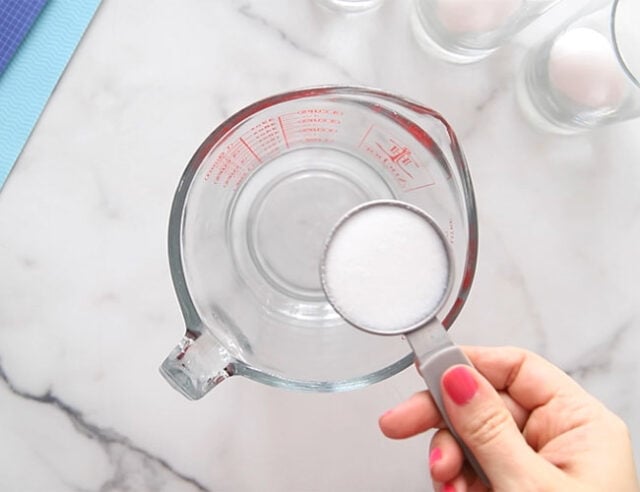
Then add about 2 cups of the hot water.

Stir until dissolved and clear.

Add the hot water into the far right cup until the water line matches the first cup. The egg should now float in this cup.
Note: if it does not float, you need to repeat with more salt and try again.

4. Add the salt water into the middle cup.
Fill until halfway up the cup. The egg should still float. If you do not have enough salt water, repeat the step above to make more.

Now pour fresh water on top of the salt water. The egg should now stay in the middle of the cup.
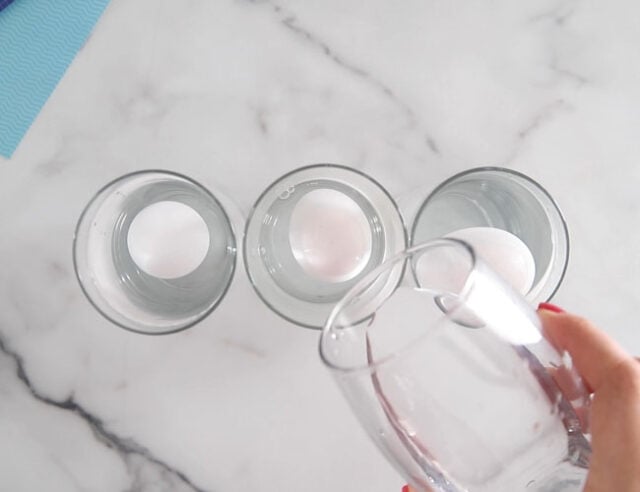
Now you have all three cups showing how eggs can float or sink in water!
See more science experiments about density:






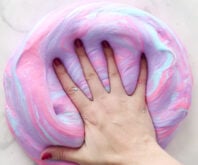




Share a Comment!
We LOVE hearing from you! Submit your question or comment here.
Your email address will not be published.
Required fields are marked *